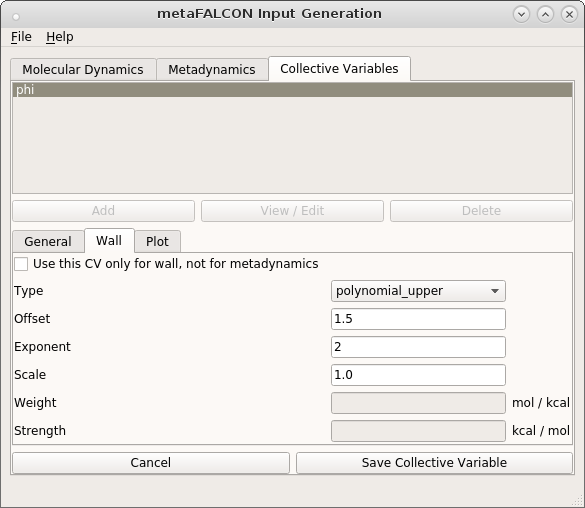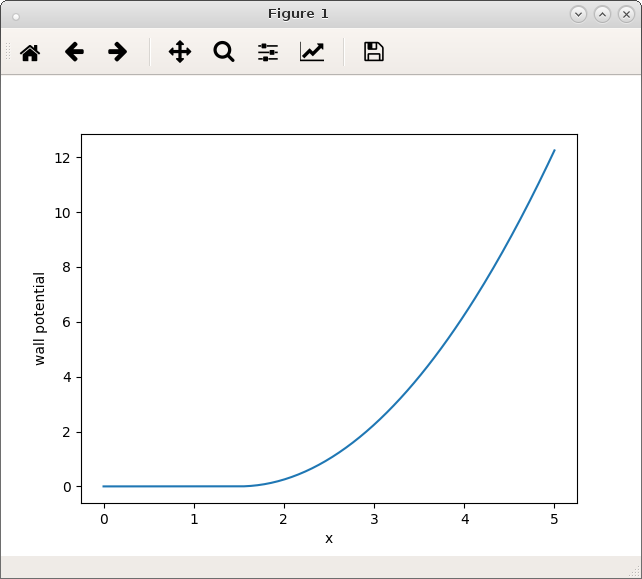Walls¶
Sometimes it is needed to introduce a wall potential to the dynamics that is able to limit the accessible CV range to a predefined region.
Again, the easiest setup is achieved with the GUI application, where the wall section is found as one of the CV editing tabs:

Every CV allows the addition of one wall potential. If more than one wall is needed on the same CV or if a wall should be inserted on a variable that is not used as a metadynamics CV, just create a new variable and check the option on top of the form. This will disable it for the use in the metadynamics, so the only sense of the variable is the wall potential.
Two types of walls are implemented in the wall module of the
metafalcon package. A polynomial wall

is requested with the keyword polynomial_upper if it should act when  takes values larger than
takes values larger than  or polynomial_lower if the aim is to prevent the
system from undercutting
or polynomial_lower if the aim is to prevent the
system from undercutting  .
.
Another possibility is the logarithmic potential

that is available with the keywords log_upper and log_lower, respectively.  and
and
 are referred to as weight and strength factors in the GUI.
are referred to as weight and strength factors in the GUI.
If you are not sure which parameters to choose, it may be suitable to plot the potential using the
plot_wall() function:
from metafalcon.wall import plot_wall, polynomial_upper
plot_wall(polynomial_upper, xmin=0.0, xmax=5.0, x_offset=1.5, s=1.0, exp=2.)
The resulting plot shows the wall potential:
